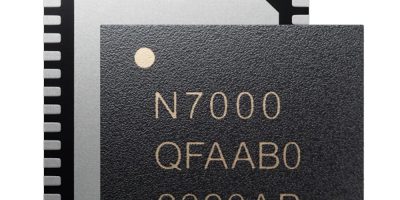According to ITEC, its ADAT3 XF Tagliner is the industry’s fastest and most accurate RFID inlay die bonder. It has placement speeds of up to 48,000 units per hour (UPH), with positional and rotational accuracies better than nine microns and 0.67 degrees at one sigma. It is three times faster and 30 per cent more accurate than other die bonding equipment, claimed the company. “
The ADAT3 XF Tagliner is fully automated, with yields in excess of 99.5 per cent. It is also claimed to have the industry’s lowest total cost of ownership for equipment of this type, enabling it to bring a “significant competitive advantage” through lower manufacturing costs, said the company. It can be used in a broad range of new RFID applications including retail and automotive labels, access control, railway tickets, airline luggage tags and shipping containers.
ITEC has over 30 years’ experience in RFID, installing high-volume semiconductor chip-attach systems in multiple markets. The ADAT3 XF Tagliner includes semiconductor industry-standard features like automatic wafer change (for eight- and 12-inch wafers) and multiple high-resolution cameras inspecting before and after every process step.
The machine’s high-precision glue curing system has only two thermodes. This results in fewer moving parts for improved reliability and maintainability. The curing time of 65 milliseconds is two orders of magnitude lower than other RFID die bonders (typically several seconds), which increase operating efficiency.
The ADAT3 XF Tagliner can accommodate a diverse range of transparent and opaque web materials. That gives it another advantage over incumbent RFID die bonding equipment, said ITEC which can only use transparent material. The system integrates BW Paper systems winders and Voyantic readers, which allows it to be used with emerging and more sustainable substrate materials like paper, which are gradually replacing PET plastics. Even up to a web pitch of 50.8mm, it mains a speed of 48,000 UPH, confirmed ITEC.
The RFID die bonder has been qualified for qualified for major chip suppliers and meets the industry’s most rigorous temperature, humidity, and mechanical reliability requirements, said the company. Today it can place dies with dimensions as small as 200 microns, and this figure will improve over time. Upgrades over the course of the ADAT3 XF Tagliner’s lifetime will further optimise operation and boost performance, said the company.
Headquartered in Nijmegen, the Netherlands, ITEC is a back-end semiconductor equipment manufacturer specialising in high-volume production of semiconductors. ITEC provides the highest productivity assembly, test, inspection, and smart manufacturing platforms, targeting mass volume manufacturing from small signal to power MOS devices.
ITEC is rooted in semiconductor manufacturing, combining over 30 years of equipment and automation expertise as partner to Philips and Nexperia. In 2021, ITEC became a separate legal entity.







